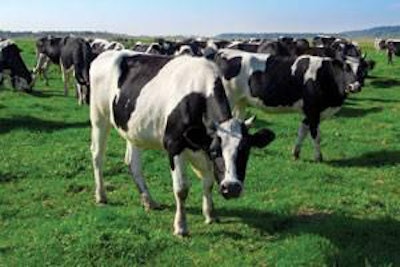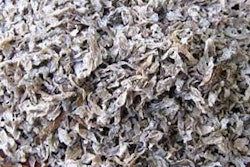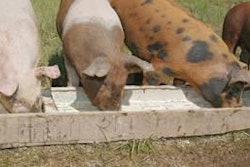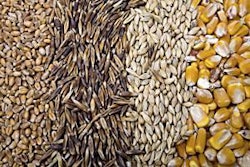
Sugar is a concentrated energy food that is not a vital nutrient for humans; but, few studies have been done to fully determine all of the implications of using sugar in an animal feed diet. The feeding of sugar to livestock is a new concept in animal feed technology (PGK John, 2006).
However, research that has been done appears to indicate that using sugar in dairy cow feed has the potential to produce good quality meat and milk.
Global sugar production
More than 100 countries produce sugar, and 78 percent of sugar produced is made from sugar cane grown primarily in the tropical and sub-tropical zones of the Southern Hemisphere. The balance comes from sugar beets, which are grown mainly in the temperate zones of the Northern Hemisphere. Generally, the cost of producing sugar from sugar cane is lower than that of processing sugar beets. Currently, 69 percent of the world’s sugar is consumed in the country of origin while the balance is traded on world markets. The five largest exporters in 2006-2007—Brazil, Thailand, Australia, South African Development Community and Guatemala—are expected to supply approximately 80 percent of all the world’s free market exports.
Sugar in feeds
There has been much interest in feeding sugars to dairy cattle in the last few years (Mary Beth Hall, 2002). Sugars are separated from disaccharides by their solubility in 80 percent ethanol. They are considered non-neutral detergent fiber carbohydrates as well as non-structural cell contents. Mature grains, such as corn or oats, may contain very little sugar because most have been converted to storage polysaccharides.
Sugars ferment very rapidly in the rumen. Studies have reported higher butyrate and slightly slower propionate production for sugar fermentation in rumen (Storbel and Russell, 1986). The dry matter intake has been seen increased with feeding sugars (Broderick et al., 2000) due to improved palatability and increased rates of solid or liquid passage from the rumen. The microbial protein yield in rumen increased with sugar feeding with more rumen degradable protein (Hall and Weimer, unpublished).
Performance studies
There have been relatively few animal performance studies using purified sugars. Two studies in which sucrose was substituted for starch in lactating dairy cows’ rations suggest that sucrose increases butterfat yield. The effects of substituting sucrose for starch at different levels are shown in Table 1.
Sugar also has a higher rate of metabolizability than grains. This is clearly seen in Table 2. Both sugar and sugar syrup have a metabolizability rate of 94 percent; however, sugar syrup has no physical limitations on incorporation in animal feed, and it maintains the binding effect while being more aromatic and palatable.
Therefore, it is evident that sugar could be well utilized for animal feeding and for human consumption, indirectly, as is done for grains. The sugar, which would be converted into glucose in an animal’s system, would no longer be as hazardous to humans as it is in its pure form.
However, it should be noted that sugar should not be fed alone as it may cause deprived appetite and acidity in animals. It should be mixed with different feed ingredients. With that in mind, the most economical sugar feed is sugar syrup.
Sugar syrup in feed
A recent advance in feed technology and animal nutrition is the development of sugar syrup, an intermediary product of sugar refining as energy feed for livestock (PGK John, 2006). In the Middle East, where the cost of grains is increasing exponentially, the ready availability of sugar syrup has been considered as a recourse to livestock feed and a better substitute for starch/grains and vegetable oil.
Sugar syrup has no physical limitations on incorporation in ration, and it maintains the binding effect while being more aromatic and palatable. It is also incorporated a lot in mash feeds and contains no aflatoxin. Research in animal nutrition has shown that feeding sugar is better than feeding starch as the sugar is directly converted into glucose without much nutrient loss (Chamberlain et al., 1993; Mahagna and Nir 1996). The concept of feeding sugar byproducts was developed on this physiological principle.
Sugar syrup utilization
Sugar syrup as a high energy feed can be used in different proportions in feeds as per the nutritional requirement of the animals. The high energy feed that is used today is mostly grains, particularly corn, barley, wheat and sorghum. The presence of fiber in grains reduces its digestibility compared to sugar. Further, more starch in grains is found to be 80 percent metabolizable.
Conclusion
Sugar is a high energy material that can be used in the human diet, but it should be used with caution to avoid health problems. Perhaps a better use of sugar would be to convert it through an animal’s system into good quality meat and milk.
The development of suitable feed technology methods in this area would certainly help the animal industry as a whole. Result-oriented research to incorporate sugar residues in animal rations as a good source of dietary energy should be initiated by animal nutritionists. Developing feeds that are more conversion efficient than low-cost feeds with higher FCR should be studied in the future.













